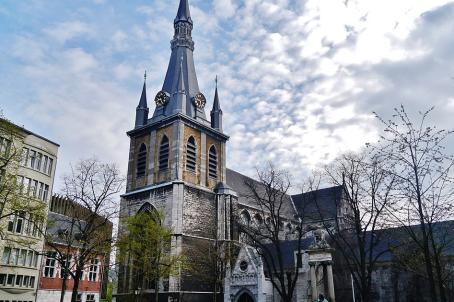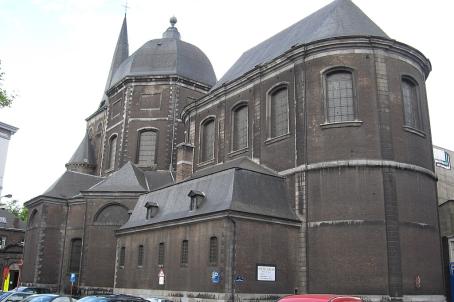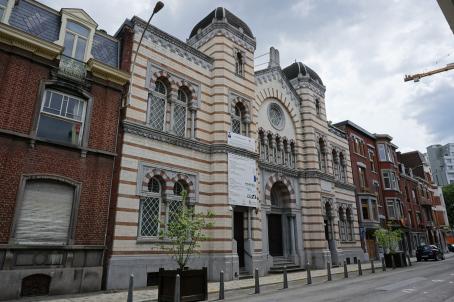Collegiate Church of St. Bartholomew

The Collegiate Church of St. Bartholomew was founded in the 11th century in the Ottonian style. The building was heavily restored between 1999 and 2006.Collegiate Church of St. Bartholomew

The Collegiate Church of St. Bartholomew was founded in the 11th century in the Ottonian style. The building was heavily restored between 1999 and 2006.Collegiate Church of St. Bartholomew

The cathedral of Liege was on the place Saint Lambert for close to 10 centuries but it was destroyed during the French revolution. After this, the collegiate Saint Paul was designated as cathedral. The Gothic building was rebuilt around 1240 and finished in 1430.Up to the 19th century, the church was adorned progressively with very beautiful Gothic furnishings made by major Belgian artists and by the contribution of masterpieces by well known local artists.

The church of Saint John the Evangelist was founded by bishop Notger around 980 and he is buried here. It was rebuilt between 1750 and 1765 following the original octagonal plan. Listed as outstanding Wallonia patrimony, it shelters three mediaeval works of art.

The synagogue of Liege was designed by the architect Joseph Remont and consecrated in the year 1899. The building was constructed in the Italianate, or Neo-Tuscan, style. The horizontal emphasis of the main façade which is typical for the Italianate building style, is strengthened by the relatively modest towers and the horizontal decorative bands. The arched windows and entrances, supported by small columns, are, however, reminiscent of examples found in Moorish architecture. The interior of the synagogue is based on a basilical layout; the longitudinal nave is divided into three aisles through the use of column arcades which support the women's gallery. The focal point of the interior is the apse located at the opposite side of the main entrance and contains the Torah ark and bimah.